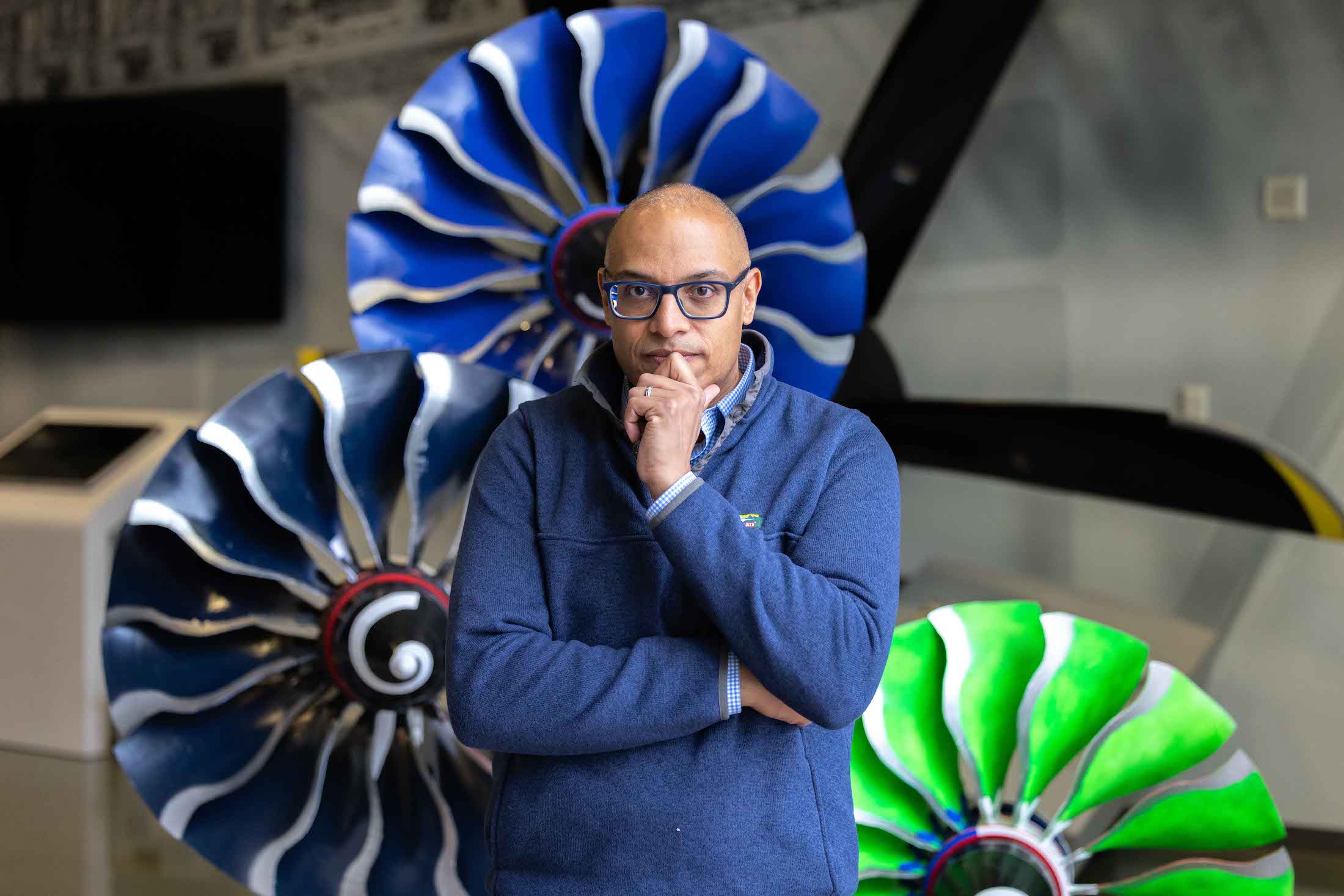When Chris Day was in sixth grade, he didn’t feel like one of the cool kids. That is, until the day he broke his battery-powered toy truck and brought it to his dad, James. Instead of buying a new one — Chris knew there was little chance of that — James took a screwdriver to the chassis and pulled out the motor. Then he showed Chris how to wire it to a propeller from a balsa wood airplane. They hooked up a 9-volt battery and voilà: a homemade electric fan. “I brought the fan to school and the kids went crazy,” Chris remembers. “If you can figure out how to make things, you’re forever cool.”
For Chris, this was the inspiration for a lifetime in engineering. He had a ready-made role model in his dad, who spent 25 years at GE as a mechanical engineer. Now Chris is two decades into his own career at the company, currently as the leader of the Edison Engineering Development Program.
The story of this father and son, who hold a sheaf of patents between them, underscores the threads — ingenuity, curiosity, determination — that can weave from one generation to the next. It also lays bare the lessons James impressed upon his children: that with talent, education, hard work, and discipline, you can make your life better. He knew because he’d done it himself.
James was born in Haiti, “the poorest nation in the Western Hemisphere,” as he often reminded Chris and his older sister. He moved to New York City in the mid-1960s, when he was 19, with his siblings and little else. An inventor at heart, he wanted to find a job as an engineer. But he couldn’t figure out how to go about it: He was in an unfamiliar country, trying to learn a new language and maneuver through the educational system at the same time. He advanced through a series of night courses — qualifying as a car mechanic, then a draftsman, then a plane mechanic — while working days at a garage or the Fordham University library.
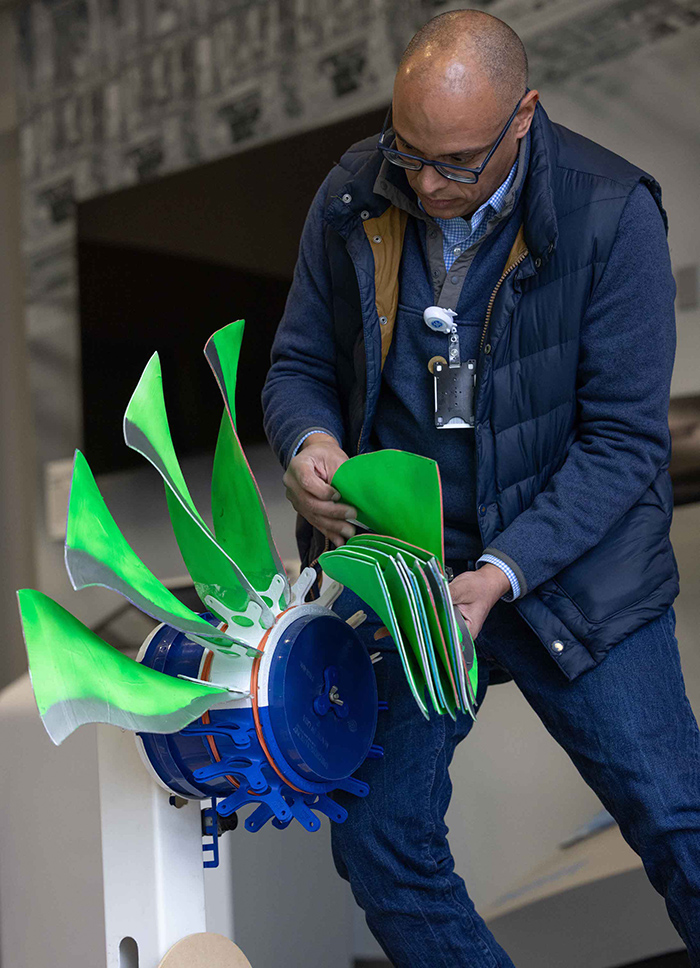
By the mid-1970s James was putting himself through the Academy of Aeronautics, a two-year technical school in Queens, by cleaning planes at LaGuardia airport at night. He graduated first in his class, which won him an unexpected job offer from GE. He was inclined to ignore it, until one of his professors explained how rare and lucrative an opportunity he’d been given. So he accepted the position and moved upstate with his wife and two young children.
At GE Research in Niskayuna, New York, he quickly became known as the man who could build anything. The 48 patents he earned at GE illustrate the range of his creativity: a pressure-controlled switching valve for a refrigeration system, a method for molding polymer-coated magnet rotors, various ways to synthesize plastic.
James had set a career goal for himself — 50 patents — which he fell just shy of achieving. But Chris is amazed by what he did accomplish, given how difficult patents are to earn.
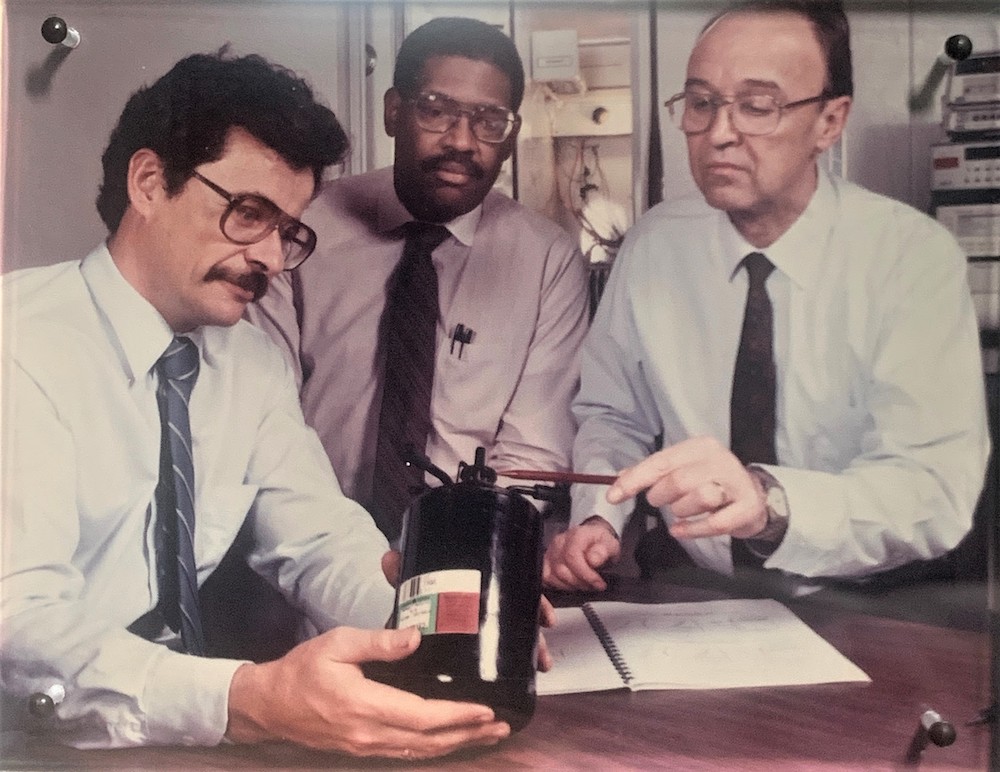
“He just got how things worked,” Chris says. “He could convert theory into something practical.” Case in point: Researchers at GE Plastics had been trying to find a better method for creating polycarbonate, which accounted for more than half of the division’s sales. Their existing procedures relied on potentially dangerous ingredients; other options required costly equipment or produced inconsistent results. James invented an inexpensive apparatus with twin rotating screws that mixed the reactants safely and efficiently, minimizing the need for harmful chemicals. GE immediately pressed the device into service.
At home, as at work, James was always tinkering. “He believed you could fix or make anything if you put your mind to it,” Chris says. For example, when Chris was 7 or 8, he learned that his dad was buying a 1958 Corvette. “I was so excited,” he remembers. “A few weeks later he showed up with a trailer — which he had built, of course — filled with a gazillion parts.” This, Chris realized with sinking disappointment, was the Corvette: a decidedly uncool pile of components that James spread all over the backyard. But after about a year of work, James was cruising around the Hudson River Valley in a classic sports car. His personalized license plate read “PE 1111”: PE for the professional engineering license he had recently earned, and 1111 to confirm that he was number one.
Although he had built a comfortable life for his family, the stress of a childhood in poverty never entirely lifted, and he made sure Chris and his sister understood what it had taken to achieve the American dream. He extolled the value of education — in 1981, while working at GE, he earned his bachelor’s in mechanical engineering from Union College in nearby Schenectady — and demonstrated the value of hard work. Pocket money was earned, not given; when Chris wanted extra cash, he got a job at a local farm.
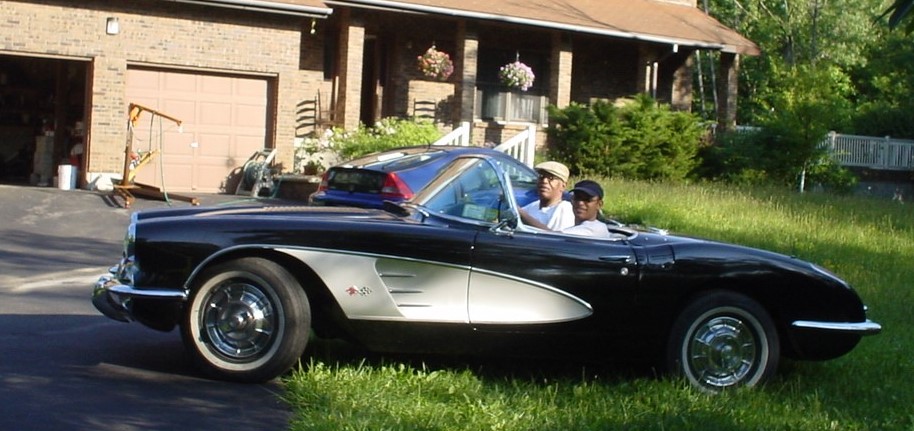
From an early age, Chris was inspired by his dad’s example. Through his own experiments — including the ill-received disassembly of a stereo — he discovered that he, too, had a knack for solving mechanical problems. During his undergrad years at SUNY Buffalo, where he majored in mechanical engineering, he buried himself in his studies and worried if his grades didn’t reflect his effort. “But I was not going to give up, because I knew what happens when you get out,” he says. “You get to invent things.”
After graduation, Chris was determined to work at GE. His mom asked James to use his contacts to get him an interview. “Dad said, ‘No, no, no, that’s the worst thing you could do for a kid,’” Chris remembers. So he took a series of odd jobs — including in the office of a local department store — while waiting for the right opportunity.
After a few months, he got his chance: a position monitoring GE Power’s first virtual control room for turbines. Over the next few years, he worked his way up to field design engineer for the steam turbine machine shop in Chicago (he got his master’s at Northwestern while he was there), and then to GE Aerospace’s plant in Lynn, Massachusetts, where he helped design aircraft engines. “I had a permanent smile,” he says. “My colleagues were so smart, and they knew everything about the product.”
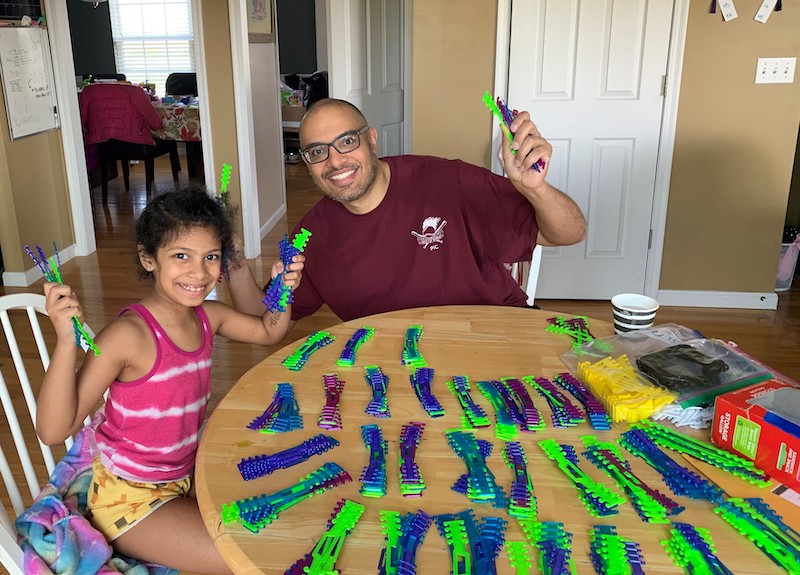
For the past decade, he’s led engineering teams at GE Aerospace’s headquarters in Evendale, Ohio. After heading the development of a streamlined fuel efficiency system for the LEAP-1B* engine, among other contributions, he designed the GE9X turbofan’s cyclonic inducer, a 3D-printed labyrinth of metal airflow channels that funnels dust out of the engine using centrifugal force. Of his seven-and-counting patents, that’s his favorite. “It was a pinch-me moment, designing a new-to-the-world part with a cutting-edge technology.”
Now he’s embarking on a new role, as leader of the Edison Engineering Development Program, which rotates recent master’s graduates through their choice of projects over two or three years. He’s relishing the chance to nurture the next generation of engineers. And, like his father, he’s cultivating the gift of hands-on craftsmanship in his own children, Alana, 10, and Amaya, 13. “We have so many STEM projects in this house,” Chris says. Even though James isn’t around to see it — he died in 2007 — his granddaughters are carrying on his legacy.
Chris also volunteers with STEM programs at local schools; he recently put together a kit to teach students to assemble and run their own miniature jet fans — a throwback to the project that kindled his interest in engineering. “It’s rewarding to inspire kids, just like my dad inspired me,” he says. “It doesn’t take much. It takes wiring a motor to a propeller and feeling empowered and cool for a minute. Next thing, the kid is off coding the newest rocket launcher.”
*The LEAP engine is a product of CFM International, a 50-50 joint company between GE and Safran Aircraft Engines.
